I'll add a seed so one can replicate the results below:
library(glmnet)
library(MASS)
data("Boston")
x = model.matrix(crim~.-1,data=Boston)#-1 for removing the intercept column
y = Boston$crim
set.seed(100)
cv.lasso = cv.glmnet(x,y,type.measure = "mse",alpha=1)
The minimum cross-validated MSE is min(cv.lasso$cvm) = 43.51256. The corresponding lambda is cv.lasso$lambda.min = 0.01843874. The lambda.1se is cv.lasso$lambda.1se = 3.375651. This corresponds to a cross-validated MSE of
cv.lasso$cvm[which(cv.lasso$lambda == cv.lasso$lambda.1se)] = 57.5393
We can access the cross-validated standard errors directly from GLMNET's output as follows:
cv.lasso$cvsd[which(cv.lasso$lambda == cv.lasso$lambda.min)] = 15.40236
So the cross-validated MSE one standard error away is
43.51256 + 15.40236 = 58.91492
This is just slightly higher than the cross-validated MSE at lambda.1se above (i.e. 57.5393). If we look at the cross-validated MSE at the lambda just before the lambda.1se, it is:
cv.lasso$cvm[which(cv.lasso$lambda == cv.lasso$lambda.1se)-1] = 59.89079
So now that we can reconcile GLMNET's output, let me explain why you are not getting the same thing using your calculation:
cv.lasso$cvm contains the cross-validated mean MSE for each value of lambda. - When we say 1 standard error, we are not talking about the standard error across the lambda's but the standard error across the folds for a given lambda.
- Continuing with the above point, at
lambda.min, we have 10 folds. We fit 10 models and have 10 out-of-sample MSE's. The mean of these 10 MSE's is given by cv.lasso$cvm[which(cv.lasso$lambda == cv.lasso$lambda.min)]. The standard deviation of these 10 MSE's is given by cv.lasso$cvsd[which(cv.lasso$lambda == cv.lasso$lambda.min)]. What we are not given in the GLMNET output are the 10 MSE's at lambda.min. If we had this, then we should be able to replicate the the standard error by using the formula you have above.
Let me know if this helps.
EDIT: Let's do an example whereby we define in advance three folds
set.seed(100)
folds = sample(1:3, nrow(x), replace = T)
cv.lasso = cv.glmnet(x,y,type.measure = "mse",alpha=1, keep =T, foldid = folds)
Note that
> min(cv.lasso$cvm)
[1] 42.76584
> cv.lasso$cvsd[which.min(cv.lasso$cvm)]
[1] 17.89725
(These differ from the earlier example above because we've defined our own folds)
Note also that I have an additional parameter keep = T in the cv.glmnet call. This returns the fold predictions for each lambda. You can extract them for the optimal lambda by doing:
cv.lasso$fit.preval[,which.min(cv.lasso$cvm)]
Before we proceed, let's create a data frame with the response, the fold predictions, and the corresponding folds:
library(data.table)
OOSPred = data.table(y = y,
predictions = cv.lasso$fit.preval[,which.min(cv.lasso$cvm)],
folds = folds)
Here is a preview of the first 10 rows:
> head(OOSPred, 10)
y predictions folds
1: 0.00632 -0.7477977 1
2: 0.02731 -1.3823830 1
3: 0.02729 -3.4826143 2
4: 0.03237 -4.4419795 1
5: 0.06905 -3.4373021 2
6: 0.02985 -2.5256505 2
7: 0.08829 0.7343478 3
8: 0.14455 1.1262462 2
9: 0.21124 4.0507847 2
10: 0.17004 0.5859587 1
For example, for the cases where folds = 1, a model was built on folds #2 & #3 and then predictions were obtained for the observations in fold #1. We compute the MSE by fold now:
OOSPredSum = OOSPred[, list(MSE = mean((y - predictions)^2)), by = folds]
folds MSE
1: 1 27.51469
2: 2 75.72847
3: 3 19.93480
Finally, we return the mean MSE and standard error of the MSE across the folds
> OOSPredSum[, list("Mean MSE" = mean(MSE), "Standard Error" = sd(MSE)/sqrt(3))]
Mean MSE Standard Error
1: 41.05932 17.47213
GLMNET may be performing a weighted mean and standard error (weighted by the number of observations in each fold), which is why the figures above a close but do not match exactly.
